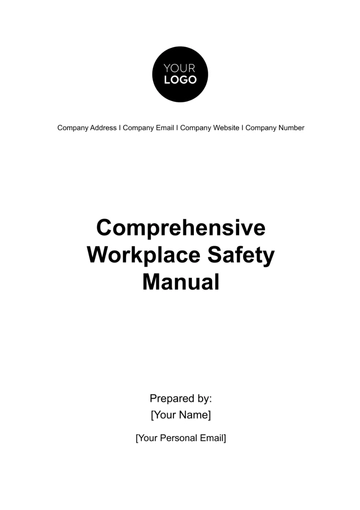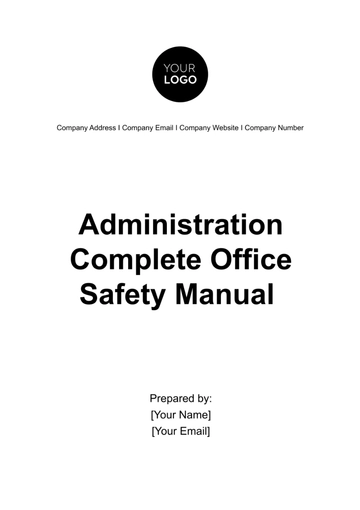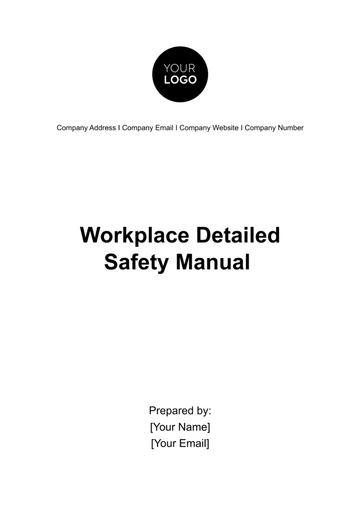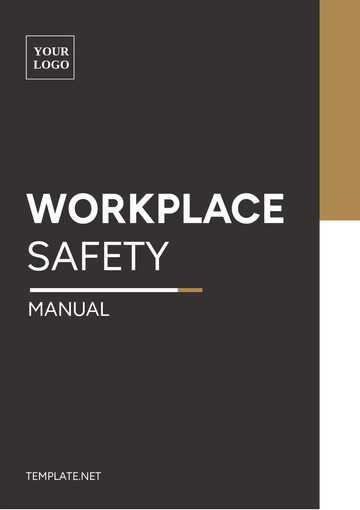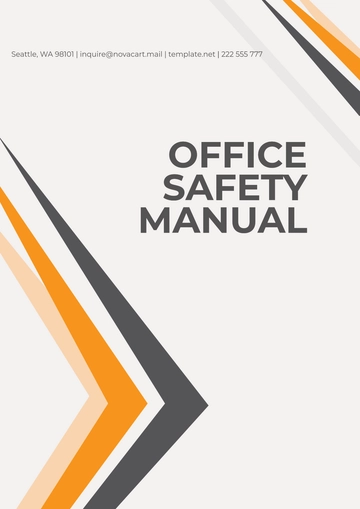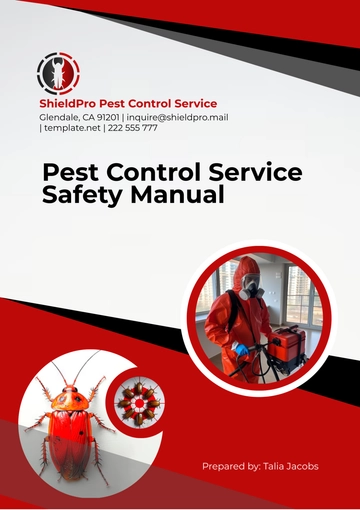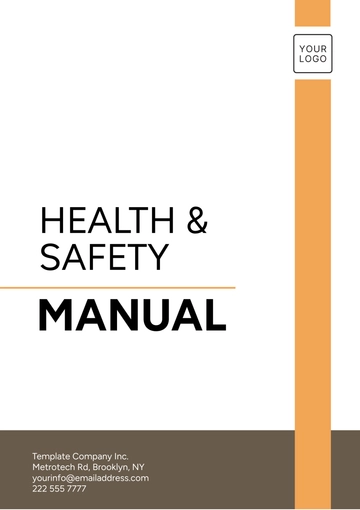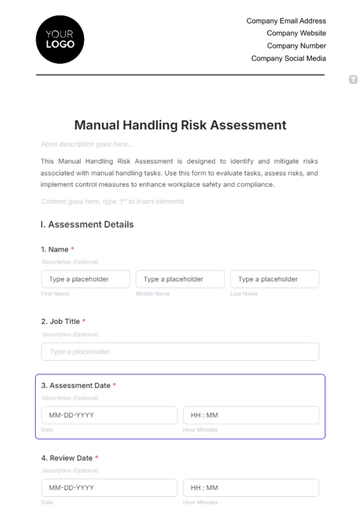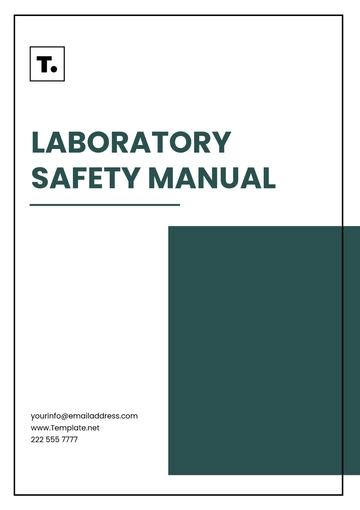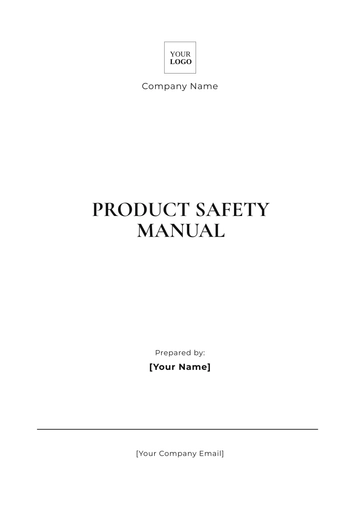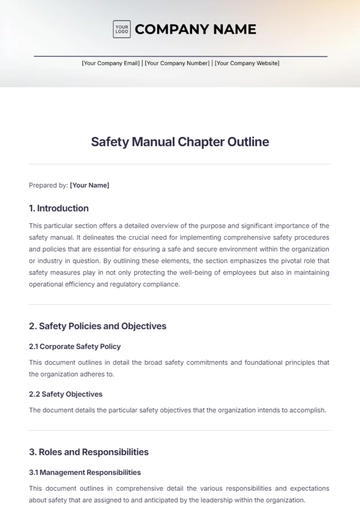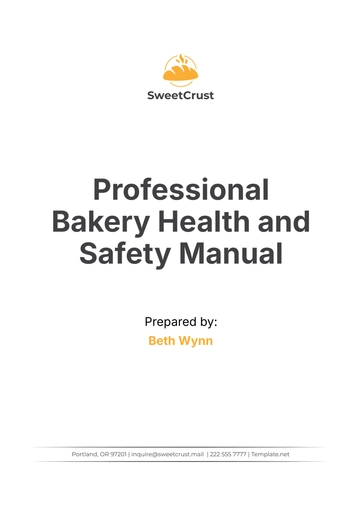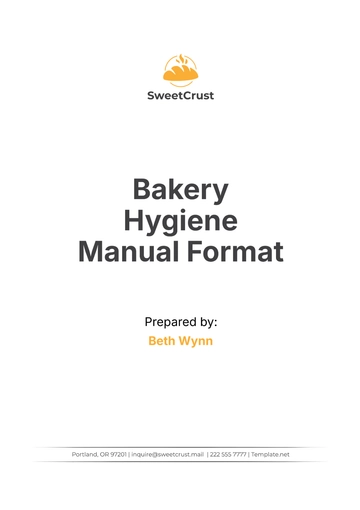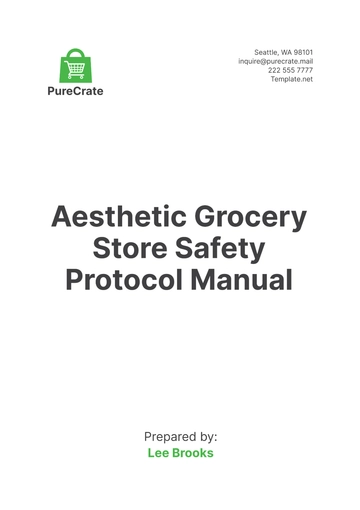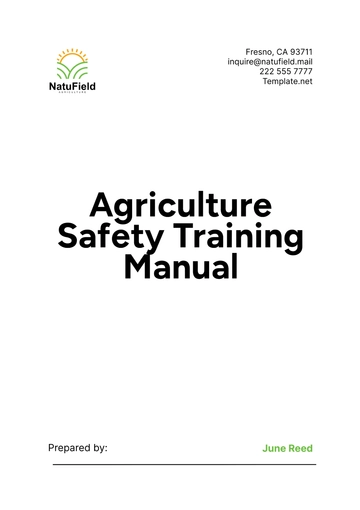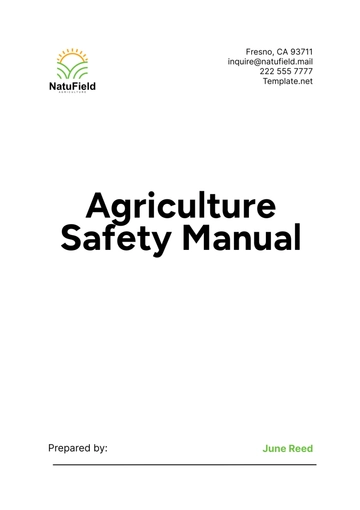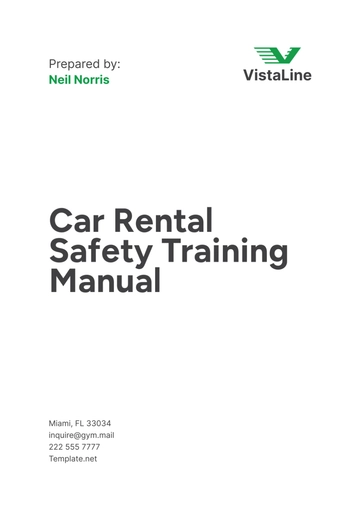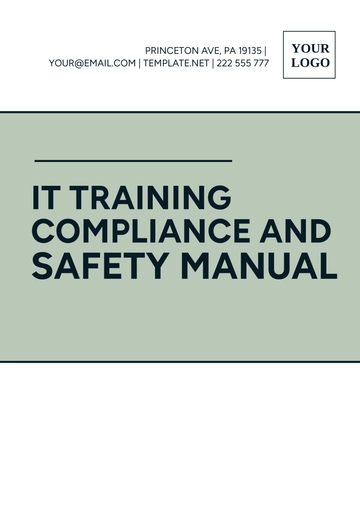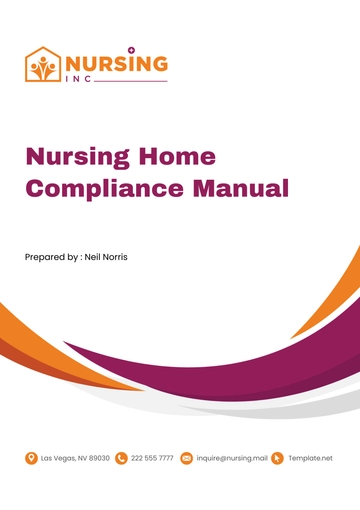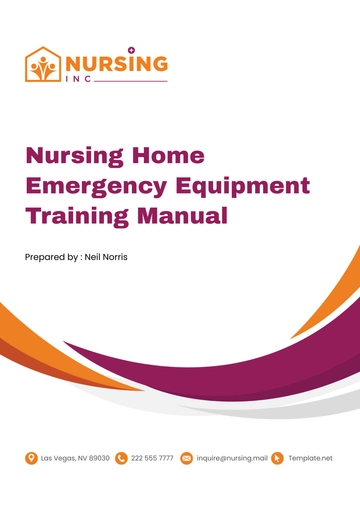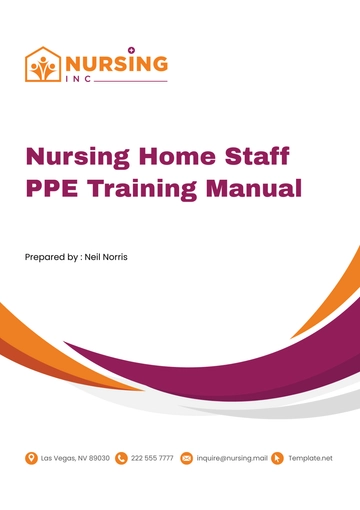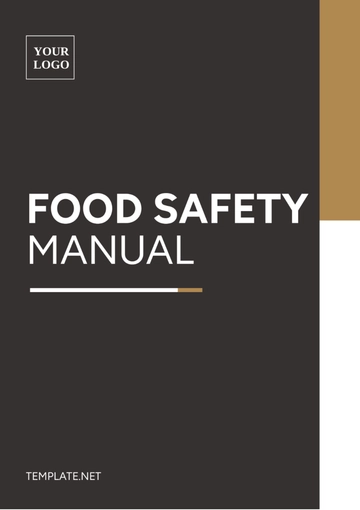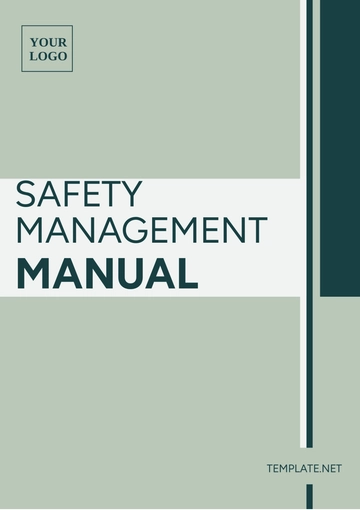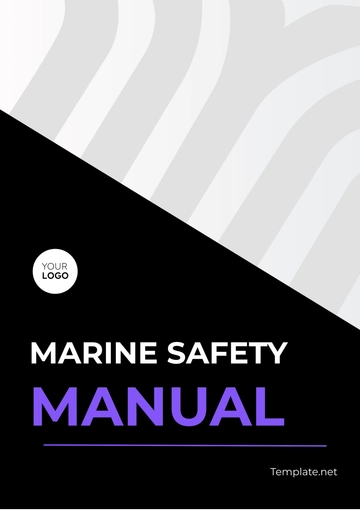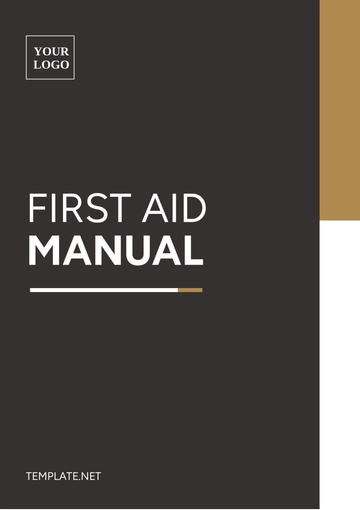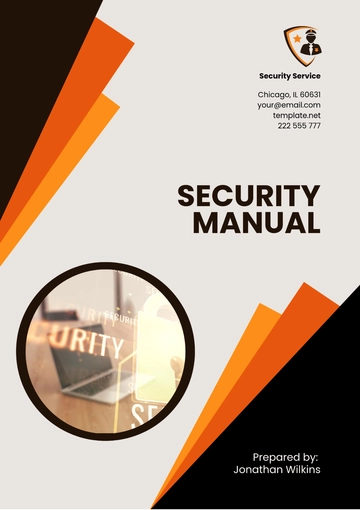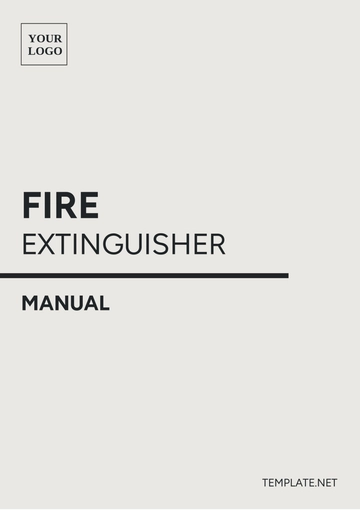Free Agriculture Safety Training Manual

I. Introduction
A. Purpose
The purpose of this Agriculture Safety Training Manual is to provide comprehensive guidelines and best practices for ensuring the safety and well-being of all employees at [Your Company Name]. The manual outlines safety protocols, procedures, and training requirements to minimize the risk of accidents and injuries in the workplace.
B. Scope
This manual applies to all employees, contractors, and visitors involved in agricultural activities at [Your Company Name]. It covers various aspects of safety, including equipment handling, chemical usage, emergency procedures, and personal protective equipment (PPE).
C. Target Audience
The target audience for this manual includes all employees, supervisors, and managers working at [Your Company Name]. This manual is designed to be a practical resource for everyone involved in agricultural operations to understand and implement safety practices effectively.
II. General Safety Guidelines
A. Personal Protective Equipment (PPE)
Wearing Appropriate PPE: All employees must wear the appropriate PPE for their tasks, including gloves, goggles, and helmets, to protect against potential hazards.
Maintaining PPE: Employees are responsible for maintaining their PPE in good condition and reporting any damages to their supervisor for replacement.
Proper Usage: PPE must be used correctly as per the training provided. Incorrect usage can lead to injuries or exposure to harmful substances.
Storage of PPE: PPE should be stored in a clean, dry place to prevent contamination and damage.
Inspection of PPE: Regular inspection of PPE is necessary to ensure it remains effective in providing protection. Any defects should be reported immediately.
B. Equipment Safety
Training on Equipment Use: All employees must receive proper training before operating any equipment to ensure they understand the operational procedures and safety features.
Regular Maintenance: Equipment should be regularly inspected and maintained according to the manufacturer's guidelines to prevent malfunctions and accidents.
Safety Guards: Safety guards and devices on equipment should never be removed or bypassed as they are essential for preventing injuries.
Operating Procedures: Follow the standard operating procedures (SOPs) for each piece of equipment to ensure safe and efficient operation.
C. Chemical Safety
Proper Labeling: All chemicals must be properly labeled with their name, hazards, and handling instructions to prevent accidental misuse.
Storage of Chemicals: Chemicals should be stored in a secure, well-ventilated area away from incompatible substances and ignition sources.
Handling Procedures: Follow the proper handling procedures for each chemical, including the use of appropriate PPE and ventilation.
Spill Response: In the event of a chemical spill, follow the spill response procedures to contain and clean up the spill safely.
D. Emergency Procedures
Emergency Contacts: Employees should be familiar with the emergency contact numbers and know how to reach them quickly in case of an emergency.
Evacuation Plans: Understand the evacuation routes and assembly points in case of an emergency requiring evacuation.
First Aid: Know the location of first aid kits and have basic first aid training to provide immediate assistance if needed.
Incident Reporting: Report all incidents, no matter how minor, to the supervisor to ensure they are documented and investigated.
III. Process Overview
The following table provides an overview of the key safety processes at [Your Company Name]:
No. | Step | Description |
|---|---|---|
1 | Hazard Identification | Identify potential hazards in the workplace. |
2 | Risk Assessment | Assess the risks associated with each hazard. |
3 | Control Measures | Implement control measures to mitigate risks. |
4 | Training and Awareness | Provide safety training and raise awareness among employees. |
5 | Monitoring and Review | Regularly monitor and review safety procedures for effectiveness. |
A. Hazard Identification
Identifying Physical Hazards: Look for physical hazards such as machinery, sharp tools, and uneven surfaces that could cause injury.
Chemical Hazards: Identify any chemicals used in the workplace that could pose a risk to health if not handled properly.
Biological Hazards: Be aware of biological hazards, including bacteria, viruses, and plants that could cause allergic reactions or infections.
Ergonomic Hazards: Identify tasks that could lead to musculoskeletal disorders due to repetitive motions or poor posture.
Psychosocial Hazards: Consider psychosocial hazards such as stress and workplace violence that could affect mental well-being.
B. Risk Assessment
Evaluating Likelihood: Assess how likely each identified hazard is to cause harm, considering factors like frequency and exposure.
Severity of Consequences: Determine the potential severity of harm that could result from each hazard, from minor injuries to fatal accidents.
Prioritizing Risks: Prioritize risks based on their likelihood and severity, focusing on the most critical ones first.
Documentation: Document the risk assessment findings and communicate them to all relevant personnel.
C. Control Measures
Elimination: Where possible, eliminate the hazard entirely to remove the risk.
Substitution: Replace hazardous materials or processes with less dangerous ones.
Engineering Controls: Implement engineering controls such as guards, barriers, and ventilation systems to reduce exposure to hazards.
Administrative Controls: Develop administrative controls, including SOPs and work schedules, to minimize risk.
Personal Protective Equipment (PPE): Use PPE as a last resort to protect employees from residual risks.
D. Training and Awareness
Safety Training: Provide comprehensive safety training to all employees, covering general safety guidelines and specific hazards related to their tasks.
Regular Refresher Courses: Conduct regular refresher courses to keep safety knowledge up to date.
Awareness Campaigns: Organize awareness campaigns and safety drills to reinforce the importance of safety practices.
Feedback Mechanism: Implement a feedback mechanism for employees to report safety concerns and suggest improvements.
E. Monitoring and Review
Regular Inspections: Conduct regular safety inspections to identify potential hazards and ensure compliance with safety protocols.
Safety Audits: Perform periodic safety audits to evaluate the effectiveness of safety measures and identify areas for improvement.
Incident Analysis: Analyze incidents and near-misses to understand their causes and prevent recurrence.
Continuous Improvement: Encourage continuous improvement by updating safety procedures and training based on findings from inspections, audits, and incident analyses.
Implementing these safety processes is crucial for creating a safe working environment at [Your Company Name]. Regular hazard identification, risk assessment, and the implementation of control measures help in mitigating risks effectively. Providing ongoing training and raising awareness among employees ensures that everyone is informed and prepared to handle potential hazards. Monitoring and reviewing safety procedures allow for continuous improvement and adaptation to changing circumstances.
IV. Specific Safety Procedures
The following table outlines the specific safety procedures for operating various types of equipment used at [Your Company Name]:
No. | Equipment Type | Safety Procedure |
|---|---|---|
1 | Tractors | Ensure proper training and use seat belts. |
2 | Harvesters | Perform pre-operation checks and maintenance. |
3 | Irrigation Systems | Follow correct assembly and disassembly procedures. |
4 | Hand Tools | Use appropriate PPE and maintain tools properly. |
A. Tractors
Training: All operators must complete training on the safe operation of tractors before use. This includes understanding controls, signals, and emergency procedures.
Seat Belts: Seat belts must be worn at all times while operating tractors to prevent injury in case of rollover.
Pre-operation Checks: Conduct pre-operation checks to ensure the tractor is in good working condition, including checking tire pressure, fluid levels, and brakes.
Safe Speed: Operate tractors at safe speeds, especially on uneven terrain, to prevent accidents.
Rollover Protection: Ensure that tractors are equipped with rollover protective structures (ROPS) and use them correctly.
B. Harvesters
Maintenance: Regular maintenance is essential to keep harvesters in safe working condition. Follow the manufacturer's maintenance schedule.
Safety Guards: Ensure all safety guards are in place and functioning correctly before operating the harvester.
Pre-operation Checks: Perform thorough pre-operation checks, including inspecting blades, belts, and other moving parts for wear or damage.
Operator Training: Only trained and authorized personnel should operate harvesters to minimize the risk of accidents.
C. Irrigation Systems
Assembly: Follow the manufacturer's instructions for the correct assembly of irrigation systems to prevent leaks and malfunctions.
Disassembly: Properly disassemble irrigation systems after use to avoid damage and ensure they are stored correctly.
Water Safety: Ensure that water sources used for irrigation are free from contaminants to protect crops and workers.
Regular Inspections: Conduct regular inspections of irrigation systems to identify and repair any leaks or damages promptly.
D. Hand Tools
PPE Use: Always use appropriate PPE, such as gloves and goggles, when using hand tools to protect against injuries.
Tool Maintenance: Keep hand tools in good condition by regularly sharpening blades, tightening screws, and cleaning them after use.
Correct Usage: Use hand tools only for their intended purposes and avoid using damaged tools.
Storage: Store hand tools in designated areas to prevent loss and accidental injuries.
Following these specific safety procedures for equipment operation helps to minimize the risk of accidents and injuries at [Your Company Name]. Proper training, regular maintenance, and adherence to safety guidelines ensure that equipment is used safely and efficiently.
V. Emergency Response Procedures
The following table outlines the emergency response procedures for various types of emergencies that may occur at [Your Company Name]:
No. | Emergency Type | Response Procedure |
|---|---|---|
1 | Fire | Evacuate the area and use fire extinguishers. |
2 | Medical Emergency | Provide first aid and call emergency services. |
3 | Chemical Spill | Contain the spill and follow cleanup procedures. |
4 | Severe Weather | Seek shelter and follow emergency alerts. |
A. Fire
Evacuation: In the event of a fire, evacuate the area immediately using the nearest exit. Do not use elevators.
Fire Extinguishers: Use fire extinguishers only if the fire is small and you have been trained to use them. Ensure you have a clear exit route.
Alarm Activation: Activate the fire alarm system to alert others in the building. Notify the fire department as soon as possible.
Assembly Point: Proceed to the designated assembly point and wait for further instructions from emergency personnel.
B. Medical Emergency
First Aid: Provide first aid to the injured person if you are trained to do so. Use personal protective equipment (PPE) to protect yourself.
Emergency Services: Call emergency services immediately and provide them with the necessary information, including the location and nature of the emergency.
Remain Calm: Stay calm and reassure the injured person while waiting for emergency services to arrive.
Incident Report: Document the incident and report it to the supervisor as soon as possible for further action.
C. Chemical Spill
Containment: Contain the spill using appropriate materials, such as absorbent pads or sand, to prevent it from spreading.
PPE Use: Wear appropriate PPE, including gloves and goggles, to protect yourself from exposure to hazardous chemicals.
Cleanup Procedures: Follow the established cleanup procedures for the specific chemical involved. Dispose of contaminated materials properly.
Notification: Notify your supervisor and the safety officer immediately about the spill for further instructions and incident documentation.
D. Severe Weather
Shelter: Seek shelter immediately in a designated safe area, such as a basement or an interior room without windows.
Emergency Alerts: Follow emergency alerts and instructions from local authorities. Stay informed about weather conditions.
Emergency Kit: Have an emergency kit ready with essential items, such as water, food, and a flashlight.
Post-event Procedures: After the severe weather event, assess the damage and report any hazards or injuries to your supervisor.
Having well-defined emergency response procedures is crucial for ensuring the safety and well-being of employees at [Your Company Name]. Prompt and effective responses to emergencies can minimize the impact of incidents and prevent further harm.
VI. Health and Wellness Programs
A. Employee Health Screenings
Regular Screenings: Conduct regular health screenings to monitor employees' health and identify potential issues early.
Confidentiality: Ensure that health screening results are kept confidential and used only for the purpose of improving employee health and safety.
Follow-up Care: Provide follow-up care and resources for employees who require further medical attention or support.
Preventive Measures: Promote preventive health measures, such as vaccinations and health education, to maintain a healthy workforce.
B. Mental Health Support
Counseling Services: Offer access to counseling services for employees dealing with stress, anxiety, or other mental health issues.
Awareness Programs: Implement mental health awareness programs to reduce stigma and encourage employees to seek help when needed.
Work-Life Balance: Promote work-life balance initiatives to help employees manage their professional and personal responsibilities effectively.
Supportive Environment: Create a supportive work environment where employees feel comfortable discussing mental health concerns.
C. Fitness and Nutrition
Fitness Programs: Provide fitness programs and activities to encourage physical exercise and promote overall well-being.
Healthy Eating: Offer healthy eating options in the workplace, including nutritious snacks and meals.
Education: Provide education on the importance of fitness and nutrition for maintaining good health and preventing chronic diseases.
Incentives: Offer incentives for employees to participate in fitness and nutrition programs, such as wellness challenges and rewards.
D. Stress Management
Training: Provide stress management training to help employees cope with work-related stress and maintain mental well-being.
Breaks: Encourage regular breaks during work hours to prevent burnout and reduce stress levels.
Relaxation Techniques: Promote relaxation techniques, such as mindfulness and meditation, to help employees manage stress.
Employee Assistance Programs: Offer employee assistance programs (EAPs) to provide support and resources for managing stress.
Implementing health and wellness programs at [Your Company Name] is essential for promoting the overall well-being of employees. Regular health screenings, mental health support, fitness and nutrition initiatives, and stress management strategies contribute to a healthy and productive workforce.
VII. Safety Training and Education
The following table outlines the key safety training programs offered at [Your Company Name]:
No. | Training Program | Description | Target Audience |
|---|---|---|---|
1 | Equipment Safety | Training on safe operation and maintenance of equipment. | All equipment operators |
2 | Chemical Safety | Training on proper handling, storage, and disposal of chemicals. | All employees handling chemicals |
3 | Emergency Response | Training on emergency procedures, including fire and medical emergencies. | All employees |
4 | PPE Use | Training on the correct use and maintenance of personal protective equipment. | All employees |
A. Equipment Safety
Operation Training: Provide training on the safe operation of all equipment, including tractors, harvesters, and irrigation systems.
Maintenance Training: Offer training on the maintenance procedures for each piece of equipment to ensure they remain in good working condition.
Safety Features: Educate employees on the safety features of each piece of equipment, including emergency shutoff mechanisms.
Hands-on Practice: Allow employees to practice operating equipment under supervision to build confidence and competence.
B. Chemical Safety
Proper Handling: Train employees on the proper handling techniques for all chemicals used in the workplace to prevent accidents and exposures.
Storage Guidelines: Provide guidelines on the correct storage of chemicals to avoid contamination and dangerous reactions.
Disposal Procedures: Educate employees on the proper disposal procedures for hazardous chemicals to comply with regulations and protect the environment.
Spill Response: Train employees on the correct response to chemical spills, including containment and cleanup procedures.
C. Emergency Response
Fire Drills: Conduct regular fire drills to ensure all employees know the evacuation routes and procedures.
First Aid Training: Provide first aid training to employees so they can respond effectively to medical emergencies.
Incident Reporting: Educate employees on the importance of reporting incidents promptly and accurately to facilitate timely response and investigation.
Communication: Ensure employees know how to communicate effectively during emergencies, including contacting emergency services and using internal communication systems.
D. PPE Use
PPE Selection: Train employees on how to select the appropriate PPE for different tasks and hazards.
Correct Usage: Provide instruction on the correct usage of PPE to ensure maximum protection.
Maintenance: Educate employees on how to maintain and care for their PPE to prolong its effectiveness.
Replacement: Inform employees about the signs of wear and damage in PPE and the process for obtaining replacements.
Providing comprehensive safety training and education is essential for ensuring that employees at [Your Company Name] are well-equipped to handle potential hazards. Regular training programs help to reinforce safety practices and ensure that all employees are knowledgeable about the latest safety procedures and equipment.
VIII. Safety Communication and Reporting
A. Safety Meetings
Regular Meetings: Conduct regular safety meetings to discuss safety concerns, updates, and improvements. Encourage open communication and employee participation.
Meeting Agendas: Prepare and distribute meeting agendas in advance to ensure all relevant topics are covered.
Minutes and Follow-ups: Document meeting minutes and follow up on action items to ensure that safety issues are addressed promptly.
Feedback: Encourage employees to provide feedback during meetings to identify potential safety issues and suggest improvements.
B. Safety Reports
Incident Reports: Require employees to complete incident reports for all accidents, near-misses, and hazardous conditions. This helps to track safety performance and identify trends.
Inspection Reports: Conduct regular safety inspections and document findings in inspection reports. Use these reports to identify and address potential hazards.
Audit Reports: Perform periodic safety audits and document the results in audit reports. Use audit findings to improve safety practices and compliance.
Annual Safety Report: Prepare an annual safety report summarizing the company's safety performance, achievements, and areas for improvement.
C. Communication Channels
Safety Bulletin Board: Maintain a safety bulletin board in a central location to post safety updates, notices, and important information.
Electronic Communication: Use electronic communication tools, such as email and intranet, to share safety information and updates with employees.
Suggestion Box: Provide a suggestion box where employees can anonymously submit safety concerns and suggestions for improvement.
Open-door Policy: Encourage an open-door policy where employees can approach supervisors and safety officers with safety concerns at any time.
D. Safety Culture
Leadership Commitment: Ensure that company leadership is committed to safety and sets a positive example for employees.
Employee Involvement: Involve employees in safety decision-making processes and encourage their active participation in safety initiatives.
Recognition Programs: Implement recognition programs to reward employees for their contributions to improving workplace safety.
Continuous Improvement: Foster a culture of continuous improvement where safety practices are regularly reviewed and enhanced based on feedback and new information.
Effective safety communication and reporting are crucial for maintaining a safe working environment at [Your Company Name]. Regular safety meetings, thorough reporting, clear communication channels, and a strong safety culture help to ensure that safety concerns are promptly addressed and that employees remain informed and engaged in safety efforts.
IX. Frequently Asked Questions (FAQs)
Q: What should I do if I notice a safety hazard in the workplace?
A: Report the hazard to your supervisor or safety officer immediately. Do not attempt to correct the hazard yourself unless you are trained and authorized to do so.
Q: How often should I inspect my PPE?
A: Inspect your PPE before each use and regularly during its use. If you notice any damage or wear, report it to your supervisor and request a replacement.
Q: What are the procedures for reporting an incident?
A: Complete an incident report form and submit it to your supervisor or safety officer. Ensure you provide detailed information about the incident, including the time, location, and any witnesses.
Q: How can I improve my knowledge of safety procedures?
A: Participate in the safety training programs offered by [Your Company Name]. Review the safety manual regularly and stay updated with the latest safety guidelines and procedures.
Q: What is the role of the safety officer?
A: The safety officer is responsible for overseeing the implementation of safety procedures, conducting safety inspections, and addressing safety concerns reported by employees.
Q: How can I suggest improvements to safety practices?
A: Use the suggestion box to submit your safety suggestions anonymously or discuss your ideas with your supervisor or safety officer during safety meetings.
Q: What should I do during a fire emergency?
A: Evacuate the area immediately using the nearest exit, activate the fire alarm, and proceed to the designated assembly point. Do not use elevators and follow the instructions of emergency personnel.
Q: How often are safety audits conducted?
A: Safety audits are conducted periodically, at least annually. The results are documented in audit reports, and any identified issues are addressed promptly.
- 100% Customizable, free editor
- Access 1 Million+ Templates, photo’s & graphics
- Download or share as a template
- Click and replace photos, graphics, text, backgrounds
- Resize, crop, AI write & more
- Access advanced editor
Enhance safety effortlessly with our Agriculture Safety Training Manual Template from Template.net! Customizable fields allow you to incorporate your business branding effortlessly. This fully editable template can be tailored to meet your specific training requirements. The AI Editor Tool ensures efficient creation, providing a detailed manual for your agricultural business!
